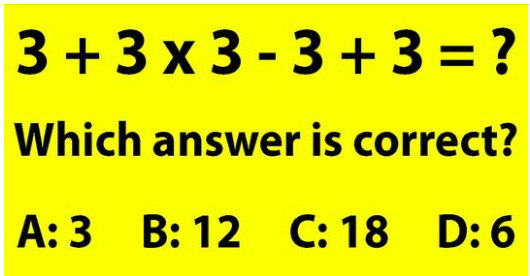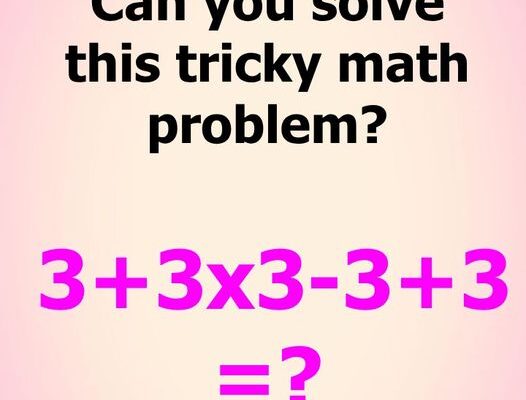Math enthusiasts and puzzle lovers, get ready for a challenge! There’s a tricky math problem making the rounds that’s stumping even the sharpest minds. If you think you’ve got what it takes to crack this puzzle, read on and put your skills to the test. This problem is not only a great mental exercise but also a fun way to engage your problem-solving abilities.
The Tricky Math Problem Explained

The math problem in question is designed to test your logical thinking and calculation skills. It presents a scenario that seems straightforward but hides a subtle complexity. Here’s the puzzle:
The Problem Statement

Many people get it wrong. Can you solve this tricky math problem?
Imagine you have a simple equation, and you need to solve it. But the equation is trickier than it seems. The problem often involves basic operations, but the challenge lies in the common pitfalls and misinterpretations that can occur.
Why This Problem is Tricky
At first glance, the problem may seem easy, but it’s the nuances that make it tricky. Here’s why:
Common Misconceptions
People often make mistakes by misinterpreting the problem or overlooking important details. For example, they might confuse the order of operations or misread the problem statement.
Subtle Mathematical Errors
The problem may involve steps where common mathematical errors can occur, such as incorrect addition, subtraction, multiplication, or division. These errors can lead to incorrect solutions.
Breaking Down the Solution
To solve this tricky math problem, follow these steps:
Step 1: Read Carefully
Ensure you fully understand the problem statement. Look for any keywords or phrases that indicate how to approach the solution.
Step 2: Identify Operations
Determine what mathematical operations are needed. Is it addition, subtraction, multiplication, or division? Knowing this will guide your calculations.
Step 3: Apply the Order of Operations
Remember the order of operations (PEMDAS/BODMAS): Parentheses/Brackets, Exponents/Orders, Multiplication and Division (from left to right), Addition and Subtraction (from left to right). Apply this to ensure accurate calculations.
Step 4: Double-Check Your Work
After solving the problem, review your calculations. Verify each step to ensure there are no errors.
Example of a Tricky Math Problem
Here’s an example of a tricky math problem to illustrate the challenge:
Example Problem:
You have 3 boxes. Each box contains 6 apples. You give away 2 boxes. How many apples do you have left?
Solution:
- Calculate Total Apples: Total apples = 3 boxes × 6 apples per box = 18 apples
- Calculate Apples Given Away: Apples given away = 2 boxes × 6 apples per box = 12 apples
- Calculate Apples Remaining: Apples remaining = Total apples – Apples given away Apples remaining = 18 – 12 = 6 apples
Answer:
You have 6 apples left.
Why Solving Math Problems is Beneficial
Engaging with tricky math problems offers several benefits:
Enhancing Problem-Solving Skills
Math problems challenge your critical thinking and problem-solving abilities. They require you to apply logical reasoning and mathematical principles.
Boosting Cognitive Function
Regularly solving math problems can improve cognitive function, including memory, attention, and processing speed.
Providing Mental Stimulation
Math problems provide mental stimulation and keep your brain active. They offer a fun and engaging way to exercise your mind.
Tips for Solving Tricky Math Problems
Here are some tips to help you tackle tricky math problems effectively:
Take Your Time
Don’t rush through the problem. Take your time to understand it fully and consider each step carefully.
Practice Regularly
The more you practice, the better you’ll become at solving tricky problems. Regular practice helps you become familiar with different types of problems and solutions.
Seek Help if Needed
If you’re stuck, don’t hesitate to seek help. Discussing the problem with others or looking up similar problems can provide insights and solutions.
Join the Puzzle Community
Engage with others who enjoy math puzzles and brain teasers. Join online forums, puzzle groups, or social media communities where you can share solutions and discuss challenges.
Conclusion
Tricky math problems like this one are a fantastic way to test your problem-solving skills and engage your brain. They challenge your logical thinking and provide a rewarding experience when solved. So, give this puzzle a try, and see if you can outsmart it! Remember, the journey to solving tricky problems is just as important as the solution itself. Happy puzzling!
